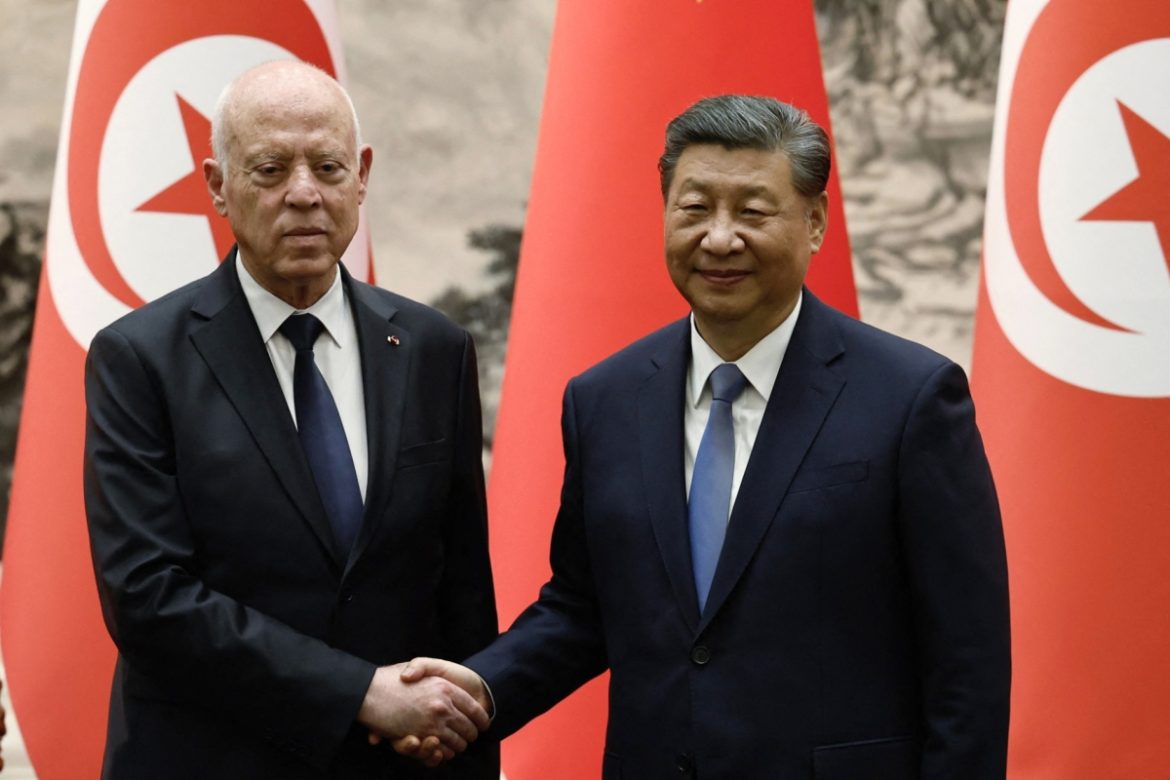In a significant shift in Tunisia’s trade dynamics, China has overtaken Italy and France to become the country’s leading exporter. This shift is a result of a remarkable 37.2% growth in Chinese exports to Tunisia, which reached 6.527 billion dinars (approximately €1.92 billion) during the first seven months of 2025, compared to the same period last year. This increase has allowed China to surpass Italy, which exported 5.711 billion dinars (€1.67 billion), and France, with 5.374 billion dinars (€1.58 billion).
This change highlights the rapid expansion of China’s influence in Tunisia, but it also exacerbates the country’s trade deficit. The latest data from the Tunisian National Institute of Statistics (INS) shows Tunisia’s imports surged, while exports remained stable. Tunisia’s exports from January to July 2025 reached 10.87 billion dinars (€3.35 billion), nearly matching 2024’s levels, but imports grew significantly to 14.37 billion dinars (€4.36 billion). This resulted in a trade deficit of 11.905 billion dinars (€3.5 billion), up from 9.632 billion dinars (€2.84 billion) in the same period last year. Consequently, the trade coverage ratio, representing the proportion of exports to imports, fell to 75.6% from 79.4% in 2024.
Tunisian exports showed mixed results by sector. The mining and phosphate sectors experienced growth of 8.6%, and mechanical and electrical industries grew by 6.5%. However, the energy sector saw a significant decline of 34.8%, largely due to reduced sales of refined products. Agri-food exports also dropped by 17.5%, driven by falling olive oil sales, while the textile, clothing, and leather sector saw a slight dip of 0.2%.
On the import side, purchases of capital goods rose by 18.6%, raw materials and semi-finished products increased by 6.6%, and consumer goods grew by 12.1%. In contrast, imports of energy products fell by 14.9%, and food imports dropped by 5.1%.
Geographically, Tunisia’s trade remains heavily dependent on the European Union (EU), which accounts for 70.6% of Tunisia’s exports and 44.2% of its imports. Exports to the EU grew overall, particularly to Germany (+15.4%) and France (+7.5%), but declined with Italy (-9.4%) and Spain (-30.4%). Exports to Arab countries, including Morocco (+38.5%), Libya (+12.5%), and Algeria (+20.8%), also saw significant increases.
Imports from the EU also increased, notably from France (+12.7%) and Germany (+10.3%), while imports from Italy saw a slight decrease (-0.7%). Beyond the EU, imports from China and Turkey rose, with Turkey seeing a 14.9% increase. However, imports from Russia (-21.9%) and India (-9.2%) declined.
The trade deficit of 11.905 billion dinars (€3.5 billion) is largely driven by negative balances in energy, raw materials, semi-finished products, capital goods, and consumer goods. The energy sector contributed the most to the deficit, with a shortfall of 6.037 billion dinars (€1.77 billion). In contrast, the food sector recorded a surplus of 823.4 million dinars (€242 million).

